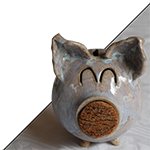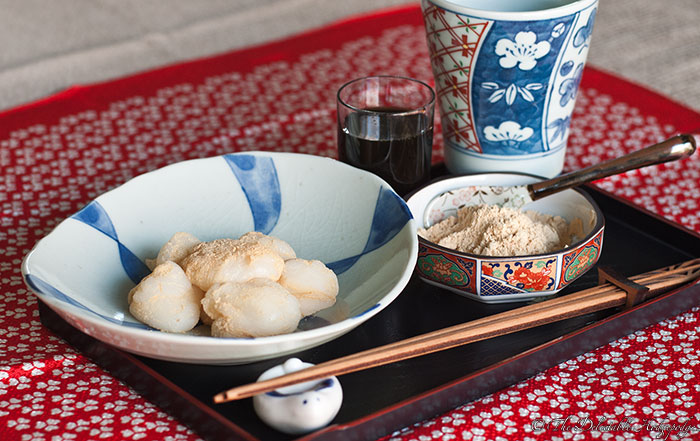
Kuromitsu Abekawa
| Ingredient | 2-3 Servings | 2-3 Servings |
|---|---|---|
| microwave mochi | 1 batch | 1 batch |
| kuromitsu | to taste | to taste |
| kinako | to coat + to taste | to coat + to taste |
Another of the many mochi-based Japanese confections, abekawamochi takes a soft, chewy base and coats it with a subtly-flavored coating of kinako flour. This variation, kuromitsu abekawa, is popular in the mountainous region around Yamanashi prefecture; it adds a topping of dark, sweet kuromitsu syrup.
One shop in Yamanashi calls their version Shingenmochi, named after a famed feudal warrior from the region. Whether Takeda Shingen actually ate this for desert is up for debate, but regardless, the delicate texture and combination of mild and powerful flavors makes it a memorable treat.
Preparation
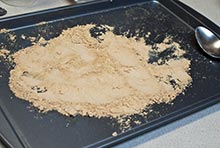 Prepare a batch of kuromitsu.
Prepare a batch of kuromitsu.- Dust a cutting board, cookie sheet, or other work surface with kinako.
Directions
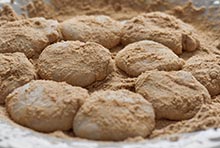 Prepare mochi.
Prepare mochi.
Prepare a batch of microwave mochi, using kinako instead of starch when working with it. Divide the mochi into bite-sized chunks.- Plate and top.
Divide the mochi chunks among individual serving dishes and serve with more kinako and kuromitsu. You can serve with the topping and syrup already on it, or separately, to be added to taste at the table.
Notes
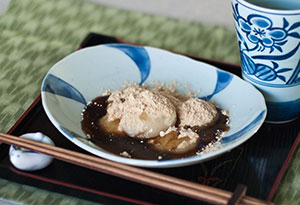
- While kinako is a type of soy flour, it is somewhat different from the soy flour commonly sold in the US. Standard soy flour is made up of either whole ground soybeans or defatted ground soy beans (in the case of flour intended for use as a protein source). Kinako is made from whole roasted soy beans ground very finely; it has a more complex flavor and darker color.
- If you can’t find kinako, you can roast regular soy flour to get close enough to make a good substitute. Put the soy flour in a small uncoated pan and cook over low heat, stirring constantly, until it starts to get a little darker. Be careful; it’s easy to burn.

